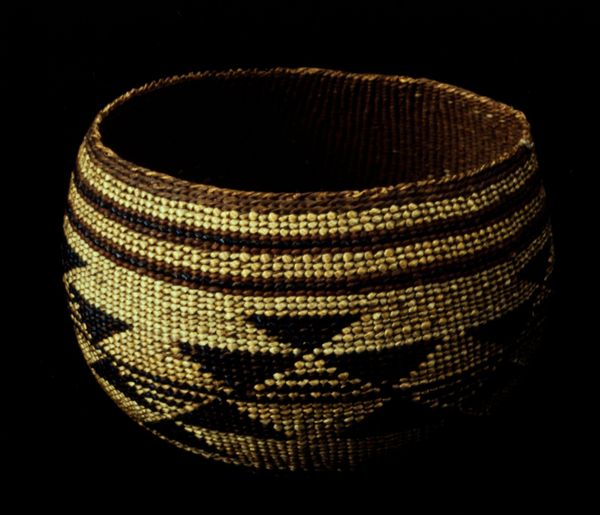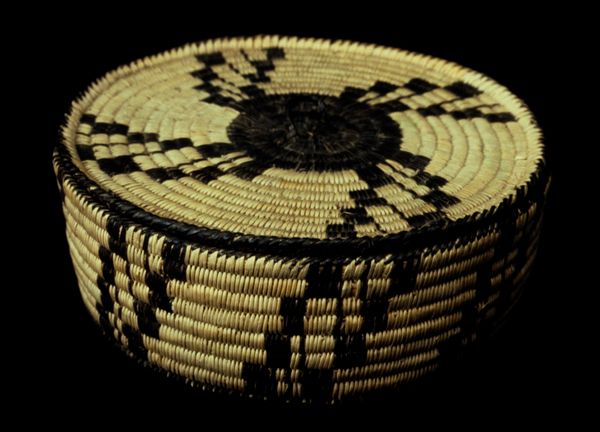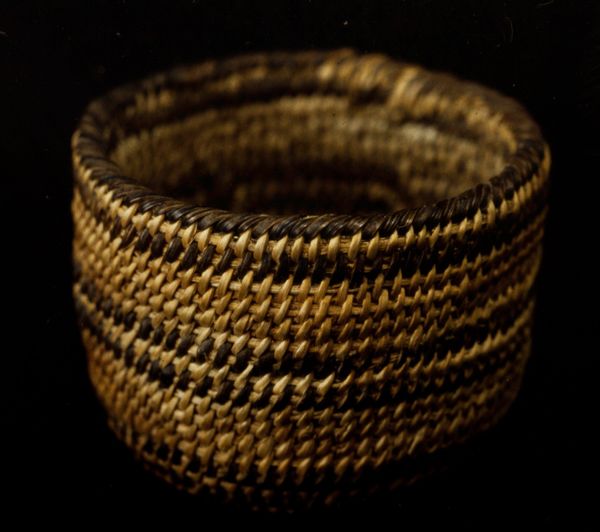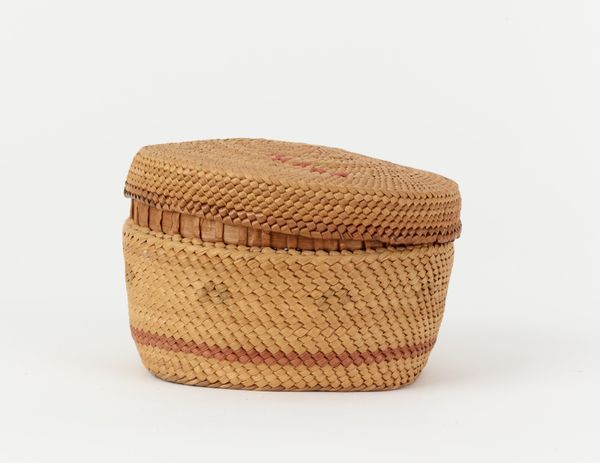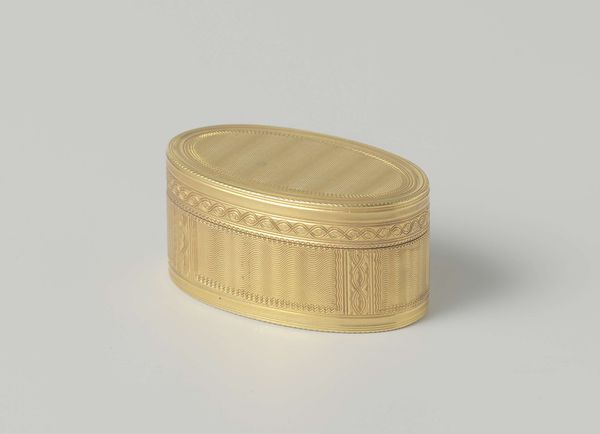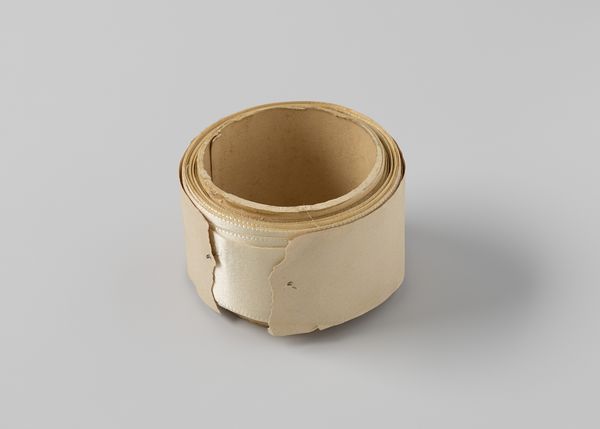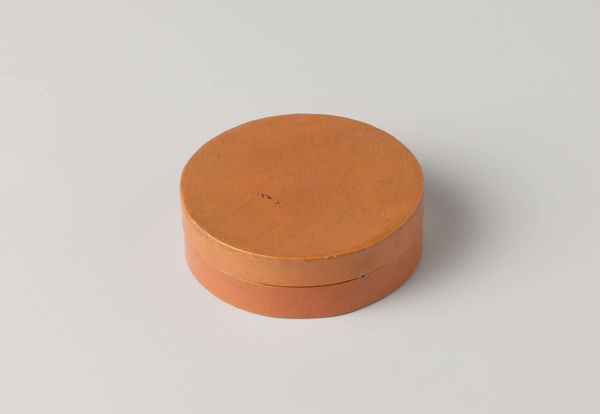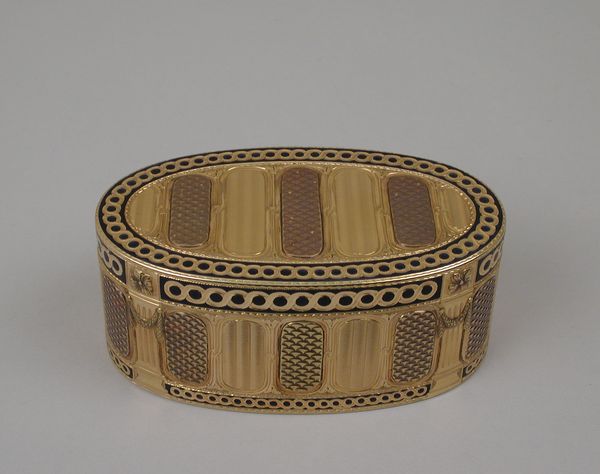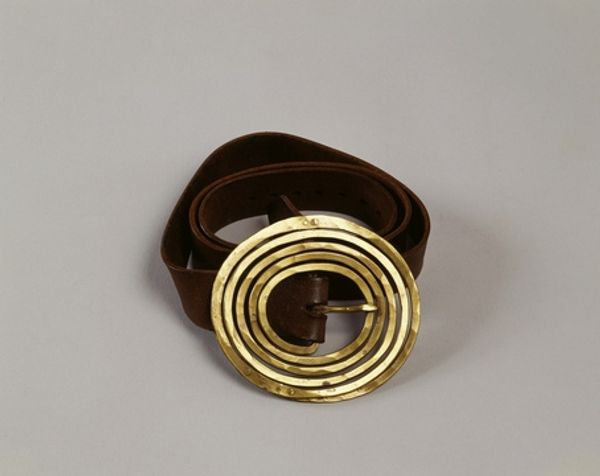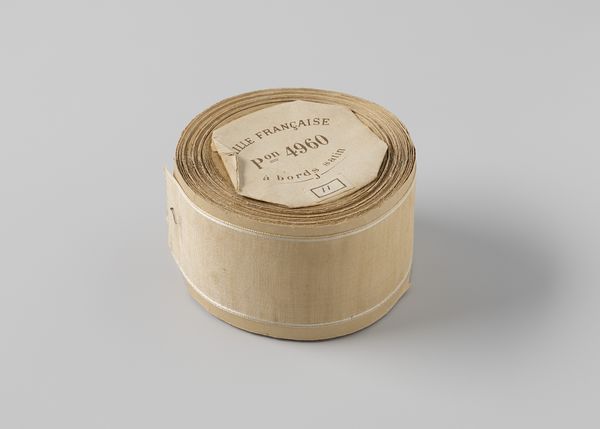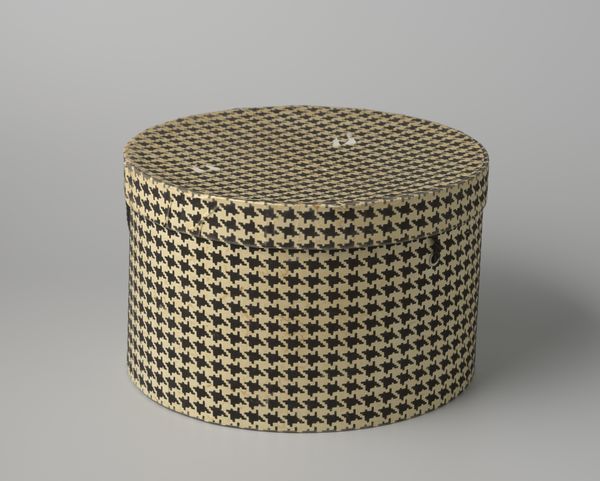
textile
#
asian-art
#
textile
#
geometric
#
abstraction
#
decorative-art
Dimensions: 3 5/16 × 7 5/16 × 6 1/4 in. (8.4 × 18.5 × 15.9 cm)
Copyright: Public Domain
Curator: Welcome. Today, we're looking at a Songkok, or Princely Crown, likely Buginese, dating from around the 19th century. It's a striking textile piece, currently residing at the Minneapolis Institute of Art. Editor: It has this…hypnotic quality. All those concentric circles on top, and the geometric pattern around the band—it's mesmerizing. It gives me a feeling of formal power. Curator: Precisely. Let's start with the crown’s overall structure. Notice the clean, cylindrical form and flat top. This creates a sense of stability and containment. How does the woven texture interplay with that form, in your view? Editor: Well, it certainly subverts a purely functional reading. The crown, so visibly constructed, so decorative, becomes an argument about status and maybe even wealth—consider how finely woven this must be. It prompts questions about its original owner and their authority. Curator: I see your point. The meticulously woven geometric designs contribute to the formal vocabulary of power. But there’s also something inherently abstract in that geometry, it invites symbolic interpretations. Do the patterns on the band signify, or are they just purely decorative? Editor: I believe they operate on both levels. It would be interesting to research the precise meanings embedded in these repeating motifs and how this particular leader employed that iconography in the specific political circumstances of their era. The crown is not simply beautiful; it's a potent declaration of identity and sovereignty. Who did it exclude, who did it uplift, what resources did it take to realize this object? Curator: Intriguing questions. Perhaps further study could provide some answers. Thank you for joining me in analyzing this important textile. Editor: Thank you. I feel a new appreciation for the layers of history woven into this object.
Comments
minneapolisinstituteofart over 1 year ago
⋮
This ceremonial headdress (songkok) was probably made for a Buginese King in the southern region of Sulawesi, an island in present day Indonesia. The Buginese were renowned seafarers and traders who converted to Islam in the early 17th century, and adopted the Ottoman ‘Fez’ as a form of official headgear, worn to Friday prayers at the mosque. Black-colored songkoks such as this indicate that the wearer had yet to make the pilgrimage to Mecca. This songkok was finely woven of raffia palm leaf fiber and gold. Thicker palm leaf fiber was used to construct the structural support, while the ultrafine filament was stained to form the exterior. Gold thread was used to create the interweave pattern which rises in the band along the side of the hat, while a flattened gold ‘ribbon’ was used for the radiating concentric circles on the top. The gold was measured in ringgit, formerly a trading unit which dates to at least the 17th century, and the name of the currency in present day Malaysia, where many Bugis have since settled. The amount of gold used in a Songkok directly corresponds to the rank of the aristocrat in the court. Here, the width of the gold band and unprecedented number of concentric gold rings indicates that it was once worn by the King. After Indonesian independence in 1945, such sonkgoks fell out of favor, replaced by the ‘peci,’ frequently worn by Muslim men throughout the Indonesian archipelago and beyond.
Join the conversation
Join millions of artists and users on Artera today and experience the ultimate creative platform.
